Tribal braids are more than just a hairstyle; they're a celebration of culture, a form of artistry, and a personal statement all woven into one. This intricate hairstyle, with its roots deeply planted in the rich soil of African heritage, has been making waves across the globe for its bold and beautiful aesthetic.
What is the Origin of Tribal Braids
Tribal braids originate from the many diverse cultures and tribes across the African continent, where hair is not just seen as an aspect of personal beauty but also as a conveyance of one’s social status, tribe, and family background. Every African tribe had its unique braiding style, each telling a different story. For instance, in ancient Egypt, braids could be seen adorning the heads of pharaohs in the hieroglyphics, a testament to their prestigious status.
The Fulani people of West Africa are often cited when discussing the origins of tribal braids, especially due to their unique patterns that have influenced the modern “Fulani braids”. They are distinguished by a central braid, usually decorated with beads or gold clips, that runs from the forehead to the nape, with other braids woven into the rest of the hair.
Significance and Symbolism
The significance of tribal braids is deep-seated in the cultural fabric of African societies. Braiding was more than a mere cosmetic endeavor; it was a communal activity, often performed during social gatherings. Women would gather and take turns braiding each other's hair, sharing stories, wisdom, and camaraderie. This tradition helped to foster a sense of community and continuity.
Hairstyles were a language in themselves, symbolizing one’s tribe, marital status, wealth, power, and even religion. For example, in many West African tribes, different braiding styles and adornments could indicate a young woman’s maturity and readiness for marriage.
Materials and Adornments
Materials used in tribal braids were not confined to the hair itself. Traditional braiding often incorporated natural elements such as wool, thread, shells, and beads. These items were not chosen at random; they were imbued with meaning. Beads may carry familial significance or spiritual protection, while the use of gold could signify affluence or status.
The Massai of East Africa, for instance, incorporate brightly colored beads into their braids, with each color representing an element of their culture and environment. Red, for example, is a symbol of bravery and strength.
Evolution and Influences
The transatlantic slave trade had a significant impact on the tradition of braiding. Enslaved Africans would often shave their heads for sanitary reasons upon arrival in the New World. However, the tradition of braiding lived on as a secret language of resistance and identity among slaves, who would sometimes even braid maps into their hair as routes to freedom.
With the abolition of slavery and the progress of time, African Americans continued to use hair braiding as a way to connect with their heritage. Throughout the 20th century, the civil rights movement and the Black is Beautiful movement saw a revival of traditional African hairstyles as symbols of pride and protest against Eurocentric beauty standards.
In contemporary times, tribal braids have gained popularity on the global stage, often showcased by celebrities and influencers who draw inspiration from the traditional styles. This has both positive and negative connotations: it helps in the appreciation and dissemination of African culture but also raises concerns of cultural appropriation when the styles are used without respect for or understanding of their origins.
Modern Adaptations
Today, tribal braids have been adapted and modernized, often merging with other styles to create new trends. Yet, at their core, they remain a powerful link to the past. Styles such as cornrows, box braids, and micro braids all have their roots in tribal practices but have been tailored to suit modern aesthetics and lifestyles.
Cultural Respect and Awareness
As tribal braids continue to cross cultural lines, it becomes increasingly important to approach them with respect. When non-Africans choose to wear these styles, it’s essential to do so with an awareness of and appreciation for their deep historical and cultural significance. Engaging with the communities from which these styles originate, understanding the heritage, and crediting those influences is part of showing respect for the culture.
Different Tribal Braids Styles
From the shores of Africa to the bustling cities of the western world, tribal braids have been reinvented time and again, adding modern twists to traditional styles. Each variation of the braid carries with it a distinct personality and history. Let's explore the diverse range of styles that tribal braids have to offer, as well as their cultural significance:
Tribal Braids with Heart
Incorporating designs into braids is nothing new, but tribal braids with heart shapes are a modern innovation that speaks volumes about the wearer's creativity and playfulness. The heart shapes are crafted by skillfully dividing and braiding the hair to form the curves and point of a classic heart. This style is a favorite during romantic months or simply as a means of expressing love and affection through hairstyle.
Middle Part Tribal Braids
The middle part tribal braids are a staple. They involve parting the hair down the center of the scalp and braiding the hair to either side, following the symmetry of the face. This style is versatile and suits a variety of face shapes, allowing for a neat and balanced appearance. It’s a go-to for those who favor a classic and straightforward look that still pays homage to traditional braiding patterns.
Side Part Tribal Braids
Side part tribal braids offer an edgier alternative to the middle part. They create an asymmetrical look that can be both bold and understated. By parting the hair to one side, these braids can accentuate the features of the face differently, sometimes even giving the illusion of added volume to the hair.
Tribal Fulani Braids
Tribal Fulani braids are perhaps one of the most distinctive and culturally rich styles. Originating from the Fulani people of West Africa, these braids are characterized by unique patterns that often include a central braid adorned with beads, cowrie shells, or gold accessories. The braids often sweep back from the face, creating an elegant silhouette that’s both historical and modern.
Tribal Braids with Curls
Tribal braids with curls offer a playful mix of textures. By leaving the ends of the hair unbraided or by attaching pre-curled extensions, this style gives the traditional braid a more relaxed and bohemian vibe. It's perfect for those who want to combine the sleekness of braids with the free-spirited look of curls.
Half Up Half Down Tribal Braids
The half up half down tribal braids are a testament to the versatility of braided styles. This particular look involves braiding part of the hair, typically from the front and crown, and leaving the rest free or in a different style at the back. It's an excellent choice for someone looking for a style that's both functional, keeping hair away from the face, and aesthetic.
3 Layer Tribal Braids
3 layer tribal braids are a complex style that creates a sense of depth and intricacy. The hair is braided in three distinct layers, one on top of the other, creating a three-dimensional look. This style can be quite time-consuming but the result is a stunningly detailed braid pattern that stands out.
2 Layer Tribal Braids
A slightly less complicated version of the previous style is the 2 layer tribal braids. These involve creating two horizontal layers of braids on the head. This style can be more practical for everyday wear while still maintaining a level of complexity and beauty.
Medium Tribal Braids
Medium tribal braids strike a balance between the thinness of micro braids and the thickness of larger braided styles. They are often chosen for their ease of maintenance and the ability to work well with various lengths and textures of hair.
Goddess Tribal Braids
Goddess tribal braids are a regal style that usually features thicker braids with added texture, such as waves or curls interwoven into the braids themselves. They can be adorned with accessories to heighten the "goddess" effect. This style exudes a sense of elegance and strength, drawing on the imagery of powerful women in African folklore and history.
Bob Tribal Braids with Beads
For those who prefer shorter styles, bob tribal braids with beads offer a chic alternative. The braids are cut to bob length and often finished with beads at the ends for a playful and unique look. This style is both contemporary and easy to manage, giving a nod to traditional beading practices while fitting perfectly into modern hairstyling trends.
Are Tribal Braids Easy to Maintain?
Tribal braids, with their intricate patterns and often elaborate designs, might seem daunting to maintain at first glance. They are, after all, more complex than your average single plaits or simple cornrows. The ease of maintaining tribal braids can vary based on several factors, including the braid style, hair type, lifestyle, and the individual's commitment to hair care.
Understanding the Commitment
Before diving into the nuances of maintenance, it's crucial to understand that tribal braids require a commitment to regular care. This means being diligent with cleaning, moisturizing, and protecting your braids to ensure they remain neat and do not damage your hair.
Daily and Weekly Maintenance
The daily upkeep of tribal braids is relatively straightforward. It involves protecting the hair at night with a silk or satin scarf to prevent frizz and moisture loss. Weekly, you might need to apply a light oil or braid spray to keep your scalp nourished and the braids looking fresh. These steps are simple but require consistency.
Washing Tribal Braids
Washing braided hair is where maintenance can get a bit tricky. Tribal braids can be washed, but the process is more delicate than unbraided hair. It's advised to use a diluted shampoo and to focus on the scalp rather than the length of the braids to prevent frizz. Washing should be infrequent – every two to three weeks – to maintain the integrity of the braids.
Scalp Care
An easily overlooked part of braid maintenance is scalp care. A healthy scalp equals healthy hair growth. Light oils or serums can help alleviate itchiness or dryness without causing buildup. It's critical to listen to your scalp's needs and address any tightness or discomfort immediately to prevent hair damage.
Refreshing the Style
While the main body of the braids may last for weeks without needing much attention, the hairline may require more frequent care. It's often necessary to redo the edges to maintain a crisp appearance. This touch-up can be challenging to do on your own and may require a stylist's expertise.
Longevity of Tribal Braids
A significant factor in ease of maintenance is how long you plan to keep your braids. Generally, tribal braids can last anywhere from four to eight weeks. The longer you keep them, the more care they will require to stay looking their best.
Lifestyle Considerations
Your daily activities play a role in how easy it is to maintain tribal braids. If you're physically active, sweat and frequent washes can shorten the lifespan of your braids and increase maintenance. Likewise, if you swim regularly, chlorine or saltwater can affect the braids and require additional care to counteract drying or damage.
Pros of Tribal Braid Maintenance
Despite the nuances, there are several reasons why tribal braids can be considered easy to maintain:
- Time-saving: Once your braids are installed, your morning routine is shortened. There’s no need for daily hair styling.
- Protective styling: Tribal braids protect your natural hair from daily manipulation and environmental factors, which can promote hair growth.
- Versatility: While in braids, you can still experiment with different looks, such as updos and ponytails, without additional stress on the hair.
Cons of Tribal Braid Maintenance
Conversely, there are aspects of maintaining tribal braids that can be challenging:
- Moisture retention: Keeping hair moisturized within the braids can be difficult, necessitating specific products and care.
- Edge control: The hairline and nape can become fuzzy, requiring more frequent retouching.
- Itchiness: For some, the scalp can become itchy, and without proper care, this can lead to discomfort and flaking.
Tips for Easier Maintenance
To make the maintenance process easier, consider these tips:
- Choose the right style and size: Smaller braids may be more versatile but can also be more difficult to maintain than larger ones.
- Use the right products: Invest in quality braid sprays and oils designed for braids to avoid buildup.
- Protect your hair at night: Always wrap your hair in a silk or satin scarf or use a pillowcase made of these materials.
- Plan for upkeep: Schedule regular appointments for touch-ups, if needed, to keep your braids looking neat.
- Listen to your hair: If you notice any breakage or discomfort, address it immediately.
Easy DIY Tribal Braids Guide
While it might seem like a challenge to create these styles at home, with some patience and practice, you can achieve beautiful DIY tribal braids:
Step 1: Preparation
Materials Needed:
- Rat-tail comb
- Hair moisturizer or leave-in conditioner
- Gel or edge control
- Hairbands and clips
- Hair extensions (optional)
- Hair jewelry and beads (for accessorizing)
Pre-Braiding Care:
Before you start braiding, ensure that your hair is clean, detangled, and well-moisturized. This will make the braiding process smoother and protect your hair from breakage.
Step 2: Sectioning the Hair
Using your rat-tail comb, begin by parting your hair down the middle or on the side, depending on your preferred style. Then create smaller sections where you want each braid to be. Secure each section with a hairband or clip to keep them separate.
Step 3: Starting the Braids
Begin with the front sections. Apply a small amount of gel to smooth down the roots and start braiding close to the scalp. If you're adding extensions for length or volume, make sure they're seamlessly integrated into your natural hair.
Step 4: Braiding Technique
Keep the tension consistent as you braid to ensure that the braids are even and don’t cause discomfort. The classic three-strand technique works well for tribal braids. You can also experiment with other techniques like fishtail or box braids for varied textures.
Step 5: Securing the Braids
Once you reach the end of a braid, secure it with a hairband. If you're using extensions, you can seal the ends with hot water or a lighter if the hair is synthetic (be cautious with this method).
Step 6: Adding Accessories
After all your braids are complete, you can add accessories like beads or rings to individual braids for that authentic tribal look. Hair jewelry can transform the style and make it unique to you.
Step 7: Laying the Edges
For a polished look, apply some edge control gel to your baby hairs and style them using a brush or your fingertips.
Tips for DIY Tribal Braids:
- Start simple. If you're new to braiding, begin with basic patterns before moving on to more intricate designs.
- Keep the parts neat. Clean, even parts are essential for a professional-looking finish.
- Practice tension. The right tension is important to avoid headaches and ensure your braids aren't too loose.
- Be patient. Braiding can be time-consuming, especially for beginners, so take your time.
Styling Your Tribal Braids:
- Half Up, Half Down: Gather the top section of your braids and tie them up for a stylish and easy half-up style.
- Bun: Wrap your braids into a high or low bun for an elegant look that can transition from day to night.
- Ponytail: A high ponytail with tribal braids can be a sporty and chic look, great for warmer days.
Troubleshooting Common Issues:
- Frizz: If your braids start to frizz, use a mousse or braid spray to tame them.
- Itchiness: An itchy scalp can be relieved with a light oil or a special braid scalp treatment.
- Loose Braids: If your braids become loose, it’s often best to redo them to prevent any damage to your hair.
In the rich tapestry of hairstyling, tribal braids stand out as a striking emblem of cultural heritage and contemporary fashion. They offer a versatile way to express individuality while honoring the profound roots from which they've grown. Whether adorned with beads or sculpted into elegant patterns, each braid weaves together stories of history, identity, and creativity. As a testament to both their beauty and significance, tribal braids are not merely a fashion statement but a celebration of tradition that transcends time and continues to captivate with its intricate artistry and powerful symbolism.

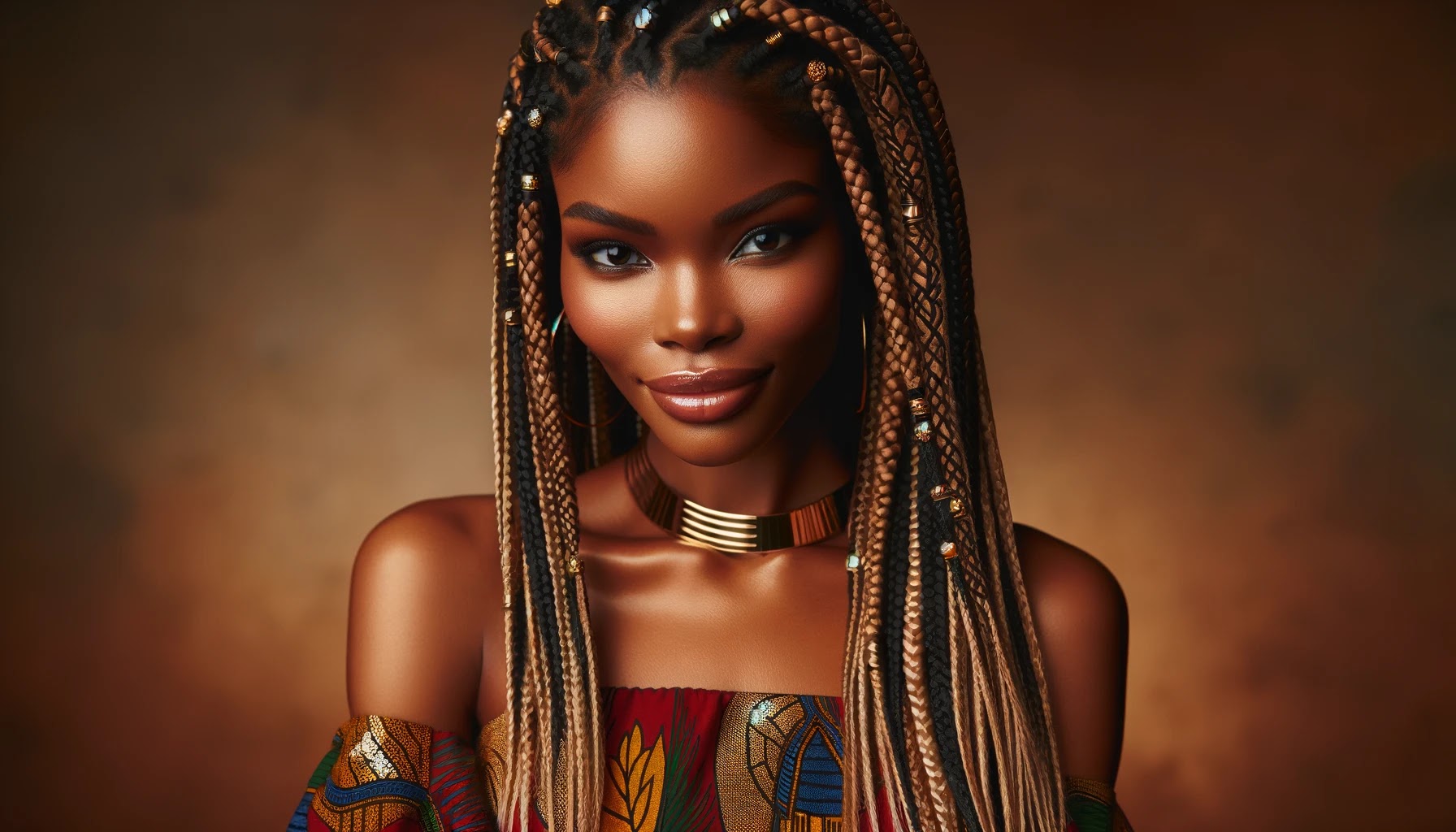
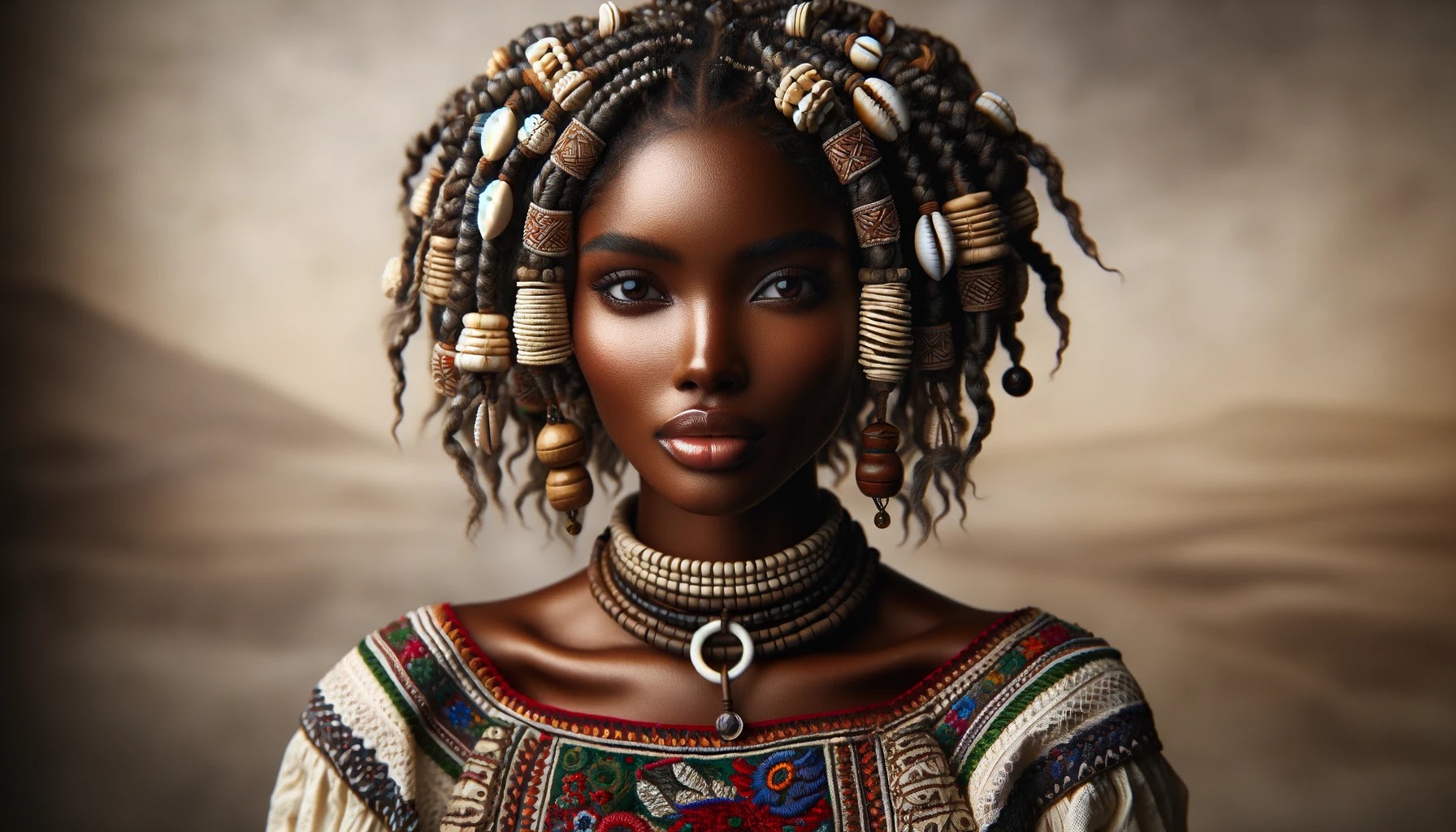
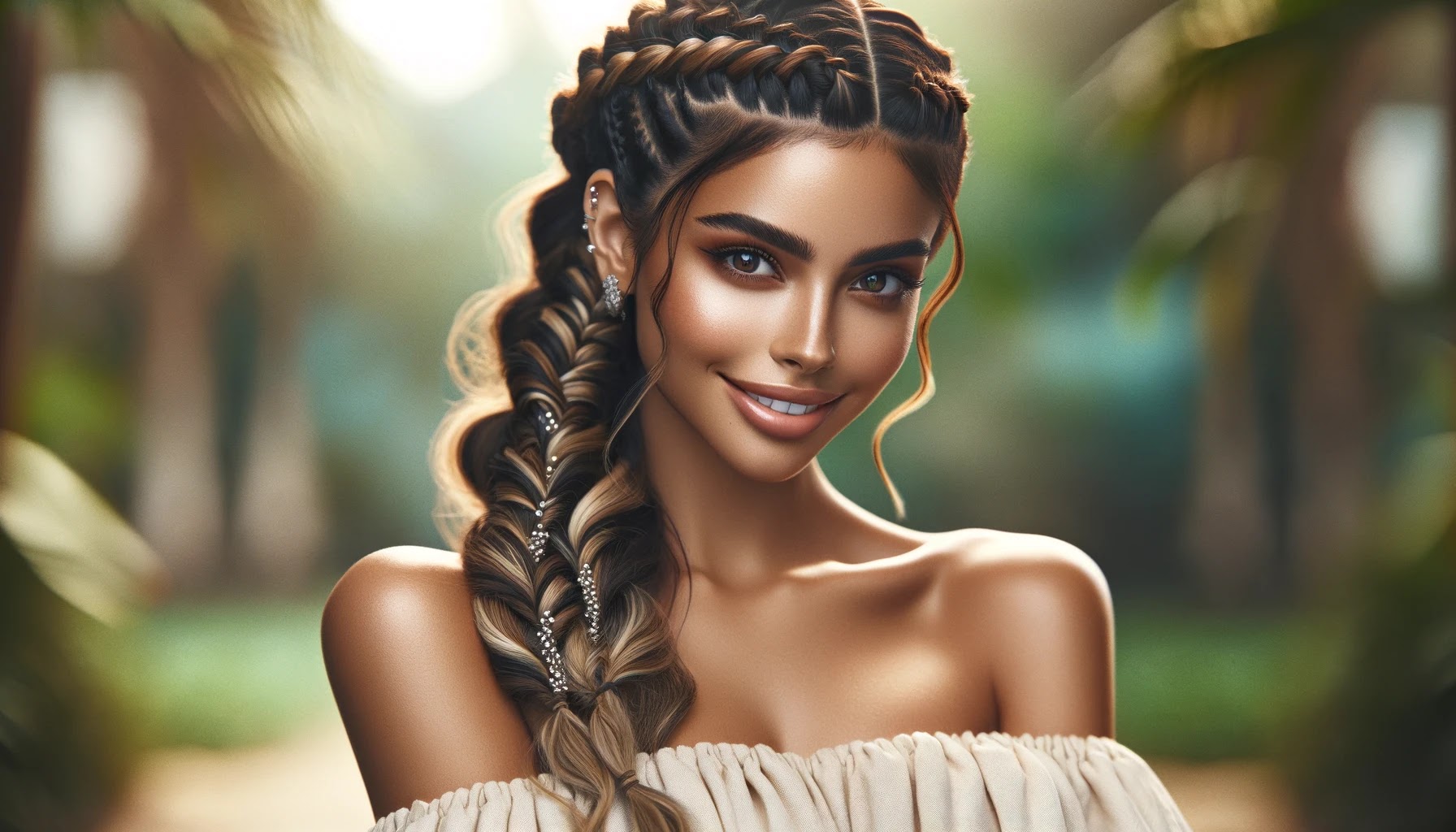


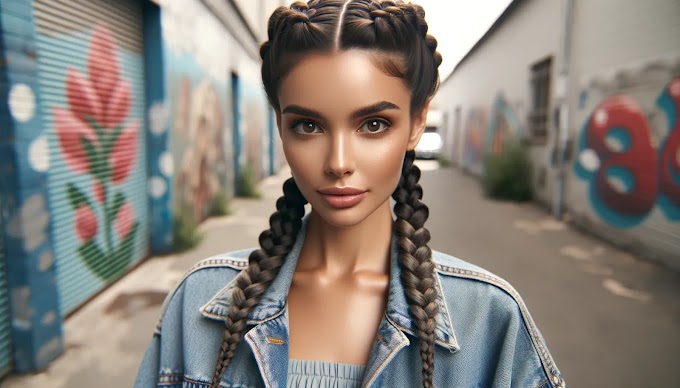
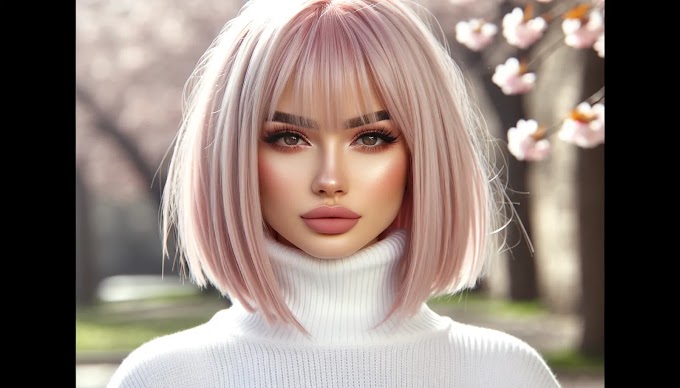

0 Comments